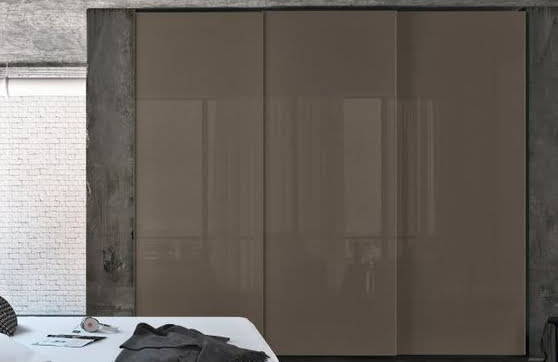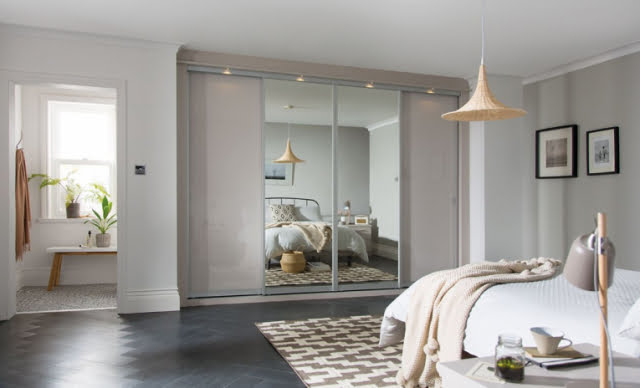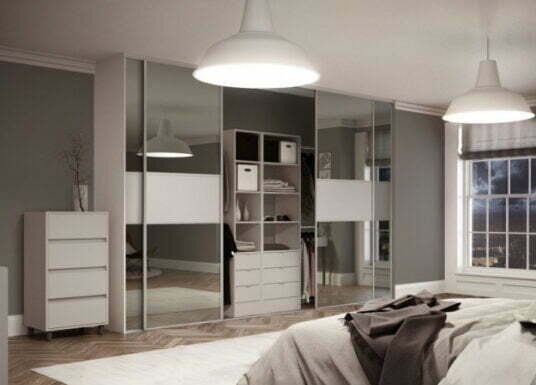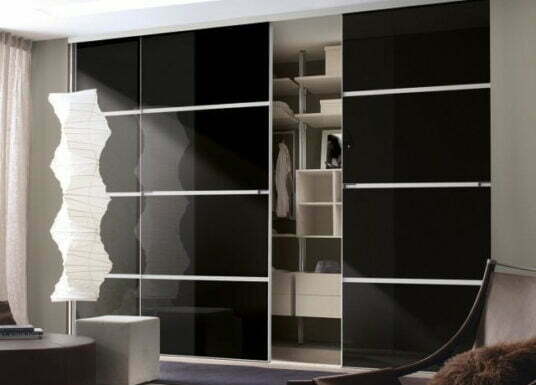Hinged vs Sliding Wardrobe doors
When purchasing or creating a new wardrobe, you must choose between hinged and sliding doors. Sliding wardrobe doors are panels that glide along tracks, whereas hinged doors are conventional swing doors that attach to the wardrobe.
Consider how simple the wardrobe will be to use, how much maintenance it will require, and how well it will fit into the available space before selecting. Here at Sliding Robes Direct, our team has worked hard to put together a breakdown of the advantages and disadvantages of both sliding wardrobe doors and traditional hinged doors to assist you in finding the perfect option for you!
Why Should You Consider Sliding Wardrobe Doors?
Sliding wardrobe doors provide a more modern storage option, but they can work well in various contexts. Their main advantage is that they take up minimal space in front of them because their doors slide in opposing directions and overlap when opened. This allows them to work well in compact spaces, such as smaller bedrooms or conversions.
Furthermore, due to the lack of hinges, sliding door wardrobes are usually more extensive, providing more storage space for your clothing and clutter and are more sturdy. A mirrored sliding door wardrobe also gives the illusion of more room, ideal for rooms where space is limited! Additionally, a fitted sliding wardrobe door can also be made to measure to achieve the most with the space you have.

To allow the doors to glide when they open and close quickly, sliding wardrobe doors require two sets of tracks with rollers. A sliding-door wardrobe typically has about 2 feet, including a 2-inch running track for the doors themselves, often installed into an MDF or natural wood base. The width of a sliding-door wardrobe is about 24 inches. It is essential to know the minimum width of a sliding-door wardrobe while shopping. However, many sliding wardrobe doors can be easily made to measure.
Below we have listed some of the pros and cons of sliding wardrobe doors:
Pro: Gives A Sleek, Contemporary Appearance.
The straight modern lines of sliding door wardrobes mean they lend a sleek appearance to the room. As a result, the doors are suited for use with extensive wardrobes. The max-width of each panel is generally 4ft; otherwise, the meetings will be too dense to glide comfortably.
Pro: It Saves Space.
Because they open in a lateral direction along the front edge of the wardrobe, sliding door panels are ideal space savers for small spaces. The use of this design does not demand the addition of any additional space to the existing area, unlike traditional hinged wardrobe doors.
Con: Handling May Be Delicate.
Sliding-door wardrobes need to be handled with care and not subjected to undue force when opening and closing. Bear in mind that rough handling might jeopardise the alignment, resulting in the shutter falling off its tracks. To ensure your wardrobe lives a long and durable life, it is vital that your sliding wardrobe is well-crafted and utilises only high-grade hardware that is guaranteed against rust and allows the sliding doors to move freely.
Ensure that you maintain clean tracks and oil the rollers regularly. It may be prudent to have a specialised carpenter assemble the wardrobe for you, assisting in adjusting the sliding panels for a secure and robust fit. Avoid slamming the wardrobe since this may result in the fabric being stuck between the doos and impede the sliders’ movement.

Are Hinged Wardrobe Doors Right For You?
The more traditional option, hinged door wardrobes, offers several advantages and disadvantages, but they are excellent in various situations. The maximum width of commonly used conventional hinged wardrobe doors is 24 inches to avoid undue strain on the hinges when the door panel is open.
Additionally, their doors’ backs may be used to hang a full-length mirror or to create additional storage space. Furthermore, they may be cut to fit beneath sloped ceilings and staircases and positioned in corners because of their ability to open at any angle. Below are some of the pros and cons our team came up with regarding traditional hinged wardrobe doors:
Pro: Complete Visibility
Hinged wardrobe doors can be fully opened, allowing for a full view of the contents. This is one of the most fundamental distinctions between a hinged and sliding-door wardrobe. Additionally, more storage options such as shelves and hooks can be added to the wardrobe’s interior, enabling you to store accessories like belts and ties.
Pro: There Is More Diversity
As a result of its extensive use, hinged wardrobes are available in various sizes and materials. There is also a broad range of exquisite doorknobs to suit the room’s decor that the hinged wardrobe is incorporated. Additionally, hinged doors may be customised to take any shape; some may have an angled top cut. Sliding doors are only offered as rectangular sliding-door wardrobes.
Pro: Low Maintenance
Hinged door wardrobes require minimal maintenance. If a hinge is broken, it may be quickly fixed or replaced. Additionally, hinges are far less expensive and more readily available than high-quality track systems utilised for sliding closet doors.
Con: They Take Up Valuable Real Estate
if your space is small, hinged wardrobes are not ideal. This is due to the door swinging outward and needing floor space to open fully.
One minor downside is that the doors may occasionally be unable to support the weight of a large mirror; nevertheless, fixing damaged hinges is simple due to their easy accessibility and ease of installation.
How Do You Choose?
Hinged doors are the conventional choice that looks best in bigger rooms with plenty of space for the doors to open and close, as well as areas with a more traditional appearance, whereas, in small or limited areas, as well as more modern dwellings, you will probably see more of a benefit from sliding door wardrobes.
Both types of wardrobes are terrific, and whether you pick a hinged door wardrobe or a sliding door wardrobe depends on personal preference, your home’s aesthetic, and how much space you ultimately have. Don’t forget that you can customise the interior to meet your needs no matter the style you go for. If you would like more advice on making the most out of your wardrobe, check out this blog by Ideal Home.
We hope that you found this helpful article! If you’d like to learn more about Sliding Robes Direct, check out other articles on our blog. We cover many topics such as “Sliding Wardrobe Doors and Interior Design: How They Go Hand in Hand” contact us today!

